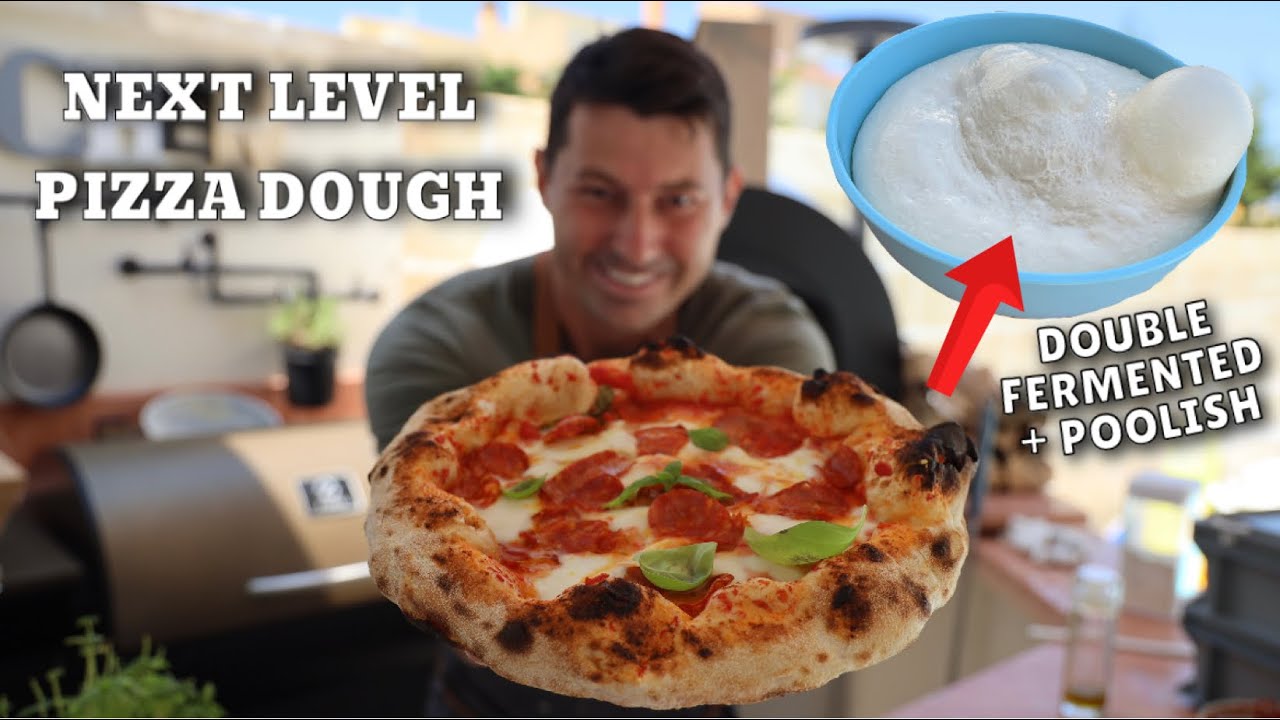PIZZA DELLA DOMENICA FATTA in CASA ricetta facile di PIZZA IN TEGLIA FACILE e morbida pizza
Summary
TLDRThe video script is a detailed tutorial on making pizza from scratch. It emphasizes the simplicity of the process, using everyday ingredients like type 0 flour, water, yeast, and oil. The host guides viewers through mixing the dough, allowing it to rise, and shaping it without kneading. They also discuss the importance of temperature and time for the dough's fermentation and suggest using a simple method to spread the dough in a pan for a second rise. The script concludes with the host's enthusiasm for the final product, highlighting the pizza's texture and flavor, and encourages viewers to try making it themselves.
Takeaways
- 🍕 The video is a tutorial on making pizza, emphasizing simplicity and the importance of good taste over complexity.
- 🌾 The recommended flour for the pizza dough is type 0, which is a standard flour, but other types like 1 or whole wheat can be used for different textures.
- 💧 The dough requires 350 ml of water, which can be measured in grams, and a specific amount of yeast depending on the type used.
- ⏱️ The dough needs to rest and rise, with the time for this process depending on the temperature and type of yeast used.
- 👐 The process involves minimal handling of the dough to prevent it from becoming tough, using tools like a spatula or spoon to mix.
- 🍴 The dough is allowed to rise in a pan, and the video suggests using aluminum pans as they are lighter and cook the pizza evenly.
- 🕒 The second rise of the dough is crucial, and the video suggests covering it with something like a plastic wrap or a cloth to maintain warmth.
- 🔥 The oven should be preheated to 200 degrees Celsius, and the pizza is baked with both the top and bottom heat on.
- 🍅 The pizza is first baked with just the sauce for a short time to set the base before adding other toppings.
- 🧂 Toppings discussed include raw tomato sauce, olive oil, salt, onions, and anchovies, with a recommendation to use Grana cheese instead of or in addition to mozzarella.
- 🍴 The final product is a thin, flavorful pizza with a focus on the quality of the ingredients and the balance of flavors.
Q & A
What is the main focus of the video script?
-The main focus of the video script is on making pizza, discussing the process from dough preparation to baking.
What type of flour is recommended for the pizza dough in the script?
-The script suggests using type 0 flour, which is a common all-purpose flour, or a semi-whole wheat flour (type 1 flour) for a more robust texture.
How much water is needed for the dough according to the script?
-The script calls for 350 ml of water, which can also be measured in grams.
What type of yeast should be used for the pizza dough?
-The script mentions using either beer yeast or dry yeast, with the amount adjusted based on whether fresh yeast or dry yeast is used.
How much yeast is needed for half a kilo of flour?
-For half a kilo of flour, half a packet (about 5 grams) of yeast is recommended.
What is the purpose of letting the yeast dissolve in the center of the flour?
-Letting the yeast dissolve in the center of the flour allows it to activate and proof, which is an essential step before mixing the dough.
How long should the dough rest before kneading?
-The dough should rest for about 5 minutes before kneading.
What is the recommended temperature for the dough to rise?
-The dough should rise in a warm environment, and the time it takes can vary depending on the temperature, typically around one to two hours.
How does the script suggest handling the dough after the first rise?
-The script recommends giving the dough a good knead, possibly using wet hands or a bit of flour to prevent sticking.
What kind of pan is recommended for the second rise of the dough?
-An aluminum pan is recommended for the second rise because it is lighter and bakes the pizza well.
How long should the dough be left to rest in the pan before baking?
-The dough should be left to rest for about 10 minutes in the pan before baking.
What temperature should the oven be set to for baking the pizza?
-The oven should be preheated to 200 degrees Celsius for baking the pizza.
What toppings are suggested in the script for the pizza?
-The script suggests using raw tomato sauce, salt, a few anchovies, and Grana cheese as toppings.
Outlines

此内容仅限付费用户访问。 请升级后访问。
立即升级Mindmap

此内容仅限付费用户访问。 请升级后访问。
立即升级Keywords

此内容仅限付费用户访问。 请升级后访问。
立即升级Highlights

此内容仅限付费用户访问。 请升级后访问。
立即升级Transcripts

此内容仅限付费用户访问。 请升级后访问。
立即升级浏览更多相关视频

कढाई में चीज बर्स्ट पिज़्ज़ा - dominos burst pizza no yeast oven - cookingshooking

HOW TO MAKE NEXT LEVEL PIZZA DOUGH | DOUBLE FERMENTED + POOLISH

PIZZA NO MIXER! GA PERLU KALIS! GAMPANGNYA..

How to Make a Catch Game in Scratch | Tutorial

I traded WAGYU STEAKS for a Pizza Master Class and this happened.

I Tried The Best Pizza Style In The World
5.0 / 5 (0 votes)
